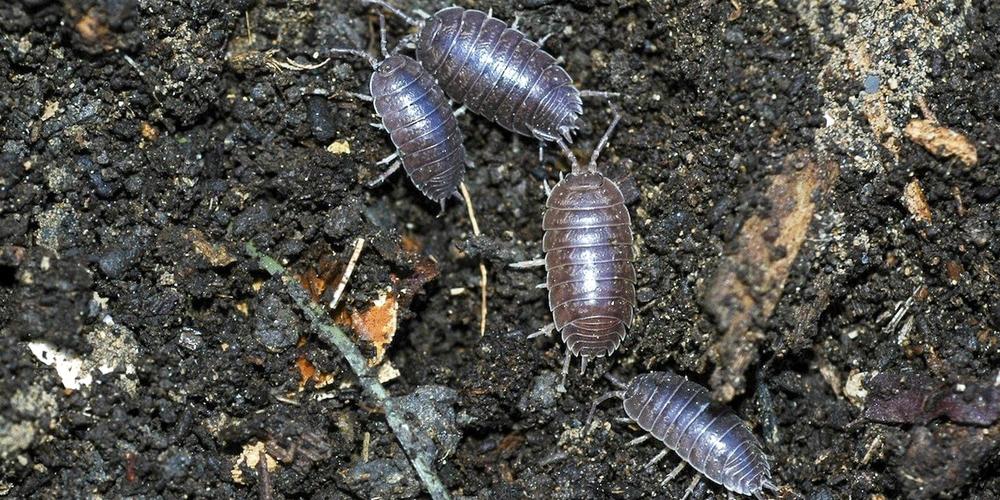
How To Get Rid of Pill Bugs
Organic Pest Control: Pill Bugs
Pill bugs (Armadillidium vulgare) or roly-poly bugs are oval-shaped hard-shell crustaceans and natural decomposers. They exist everywhere and are part of the group of creatures that break down dead organic matter into the soil. But since they are hard-shell terrestrial crustaceans, they rely on moisture to survive. While they do serve a purpose in nature they can become a nuisance in the garden, so here you will find some helpful tips on how to get rid of pill bugs.
Roly Poly bugs are fascinating when you are a kid because they can roll into a ball when you touch them. But as an adult, pill bugs are pesky little pests that can infest your garden and greenhouse.

They can become destructive in cases where:
1. They are not exposed to their many natural predators like birds, and become overpopulated. 2. Mulch is used in abundance, therefore giving them ample moisture and shelter from predators. Large populations of pill bugs can live and multiply in mulch and other damp areas. 3. In dry, depleted soil where there is not enough organic matter for them to decompose and not enough moisture for them to live. This forces them to resort to eating living plant matter in your garden.
4. The root structure of your plants is not healthy making them vulnerable to pests such as the pill bug.
Because greenhouses often provide one or even all of these conditions, pill bugs can become an infuriating issue that can make us feel defeated as organic gardeners.
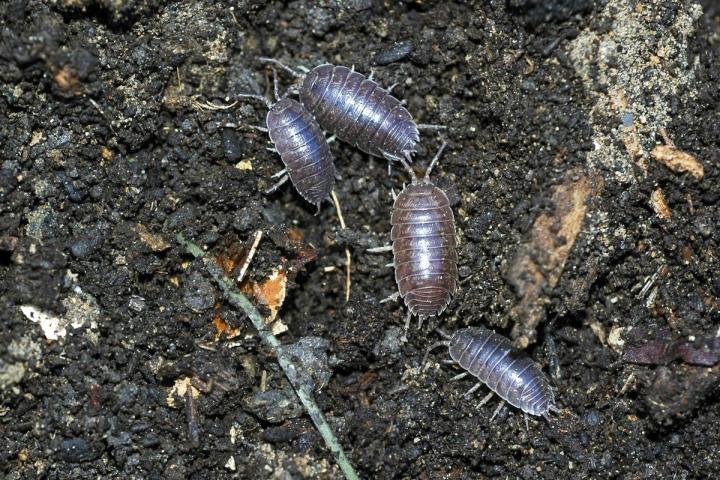
How to Get Rid of Pill Bugs in Your Garden
There are many methods on how to get rid of pill bugs and Growing Spaces would like to help. Here are a few ways to get pill bugs under control and enjoy a healthy thriving garden.
Strong Roots and Strong Soil

The key to organic pest control is having healthy soil and a healthy root structure. We use compost, compost teas, organic matter, good bacteria, efficient watering, and mycorrhizae such as Orca. If pill bugs have enough organic matter and moisture in your soil, they won’t need to use your plants as a food source. Also, if the cell walls of your plant’s roots are strong it makes the plants less vulnerable to pill bugs. Young plants are also more vulnerable to pill bugs.
Beer Traps
Any beer will do. Pill bugs aren’t picky. Put beer in a used can or plastic cup and sink it into the soil, making the lip of the container match the soil level. Pill bugs will drown themselves in beer. The trap should be checked daily and changed at least every two days.
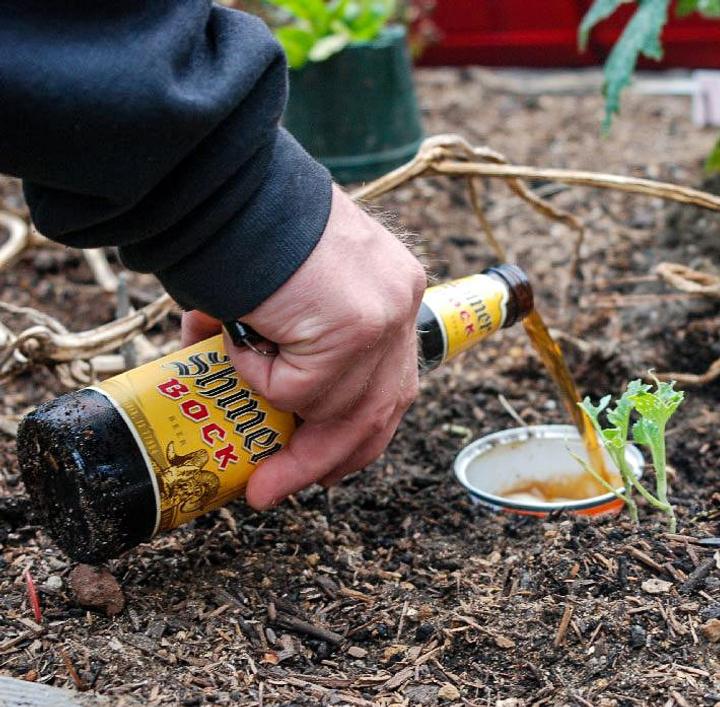
Potato or Other Fruit or Vegetable Traps
Cut potatoes can be placed along edges, and the underside should be checked each morning for pill bugs. I recommend a small container of oil to brush them into and kill them. Grapefruit or orange rinds, mango skin, and many other fruits or vegetables that retain moisture are also good options.
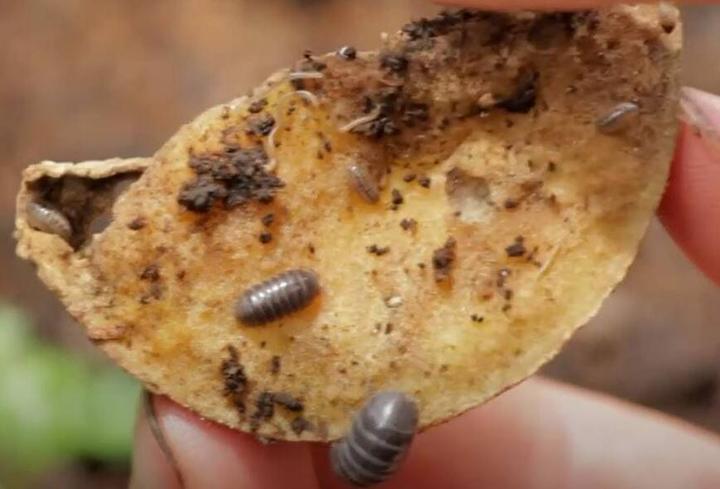

Bamboo, PVC or Toilet Roll Traps
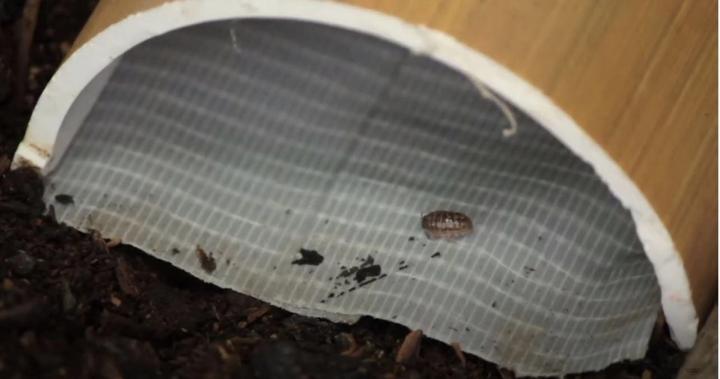
A few inches of any tube cut lengthwise in half. Then duct tape is fitted to the bottom side face up and placed on the soil by an edge where pill bugs will get stuck to the tape looking for a moist, dark place to hide. This trap should be checked often as moisture from watering decreases the stickiness of duct tape. Other kinds of tape or sticky traps can last longer and trap more at a time.
Remove mulch and dead plant matter
Pill bugs live and multiply under mulch. As decomposers, they consume and use mulch as shelter. If you remove mulch, they will be forced into traps as they are always seeking moisture and darkness. Pill bugs will also feed on decaying plant material in your garden, so removing this quickly will also force them into the traps.
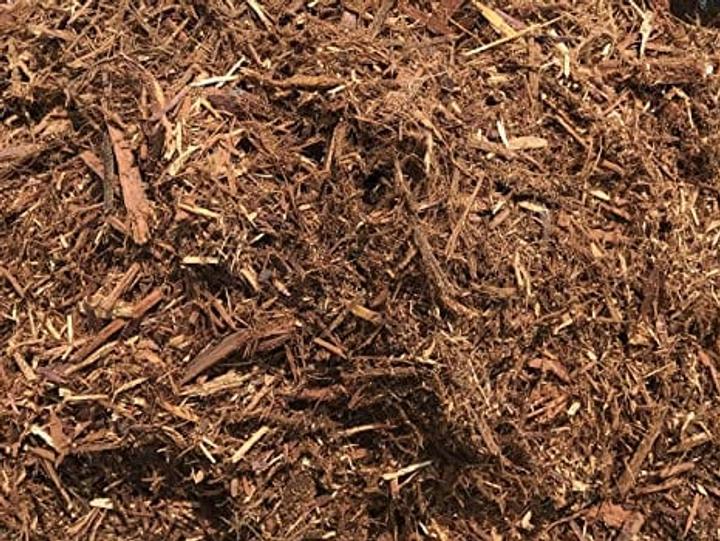
Diatomaceous Earth
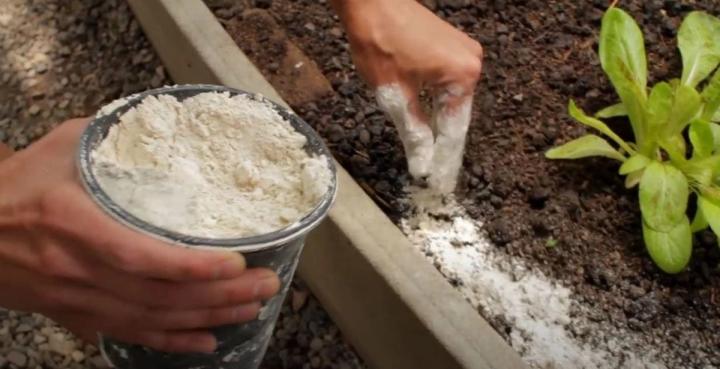
Diatomaceous earth is a safe way to desiccate or dry out pill bugs, therefore killing them. Spread diatomaceous earth along the edges of your planting beds where pill bugs like to live. Unfortunately, it also kills ants and various other insects, meaning it could be harmful to ladybugs and beneficial bugs but safe for worms. Believe it or not, diatomaceous earth is even edible, and many people find consuming it beneficial to health and wellness. It is not healthy to breathe as the dust is abrasive to the lungs. Wearing a mask is recommended when spreading it.
Disposable Cups
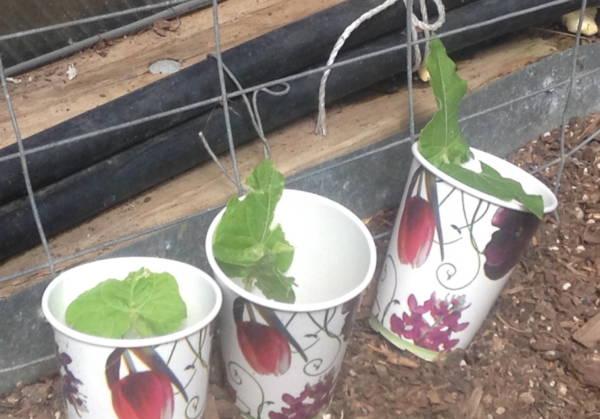
Although we try not to use single-use plastic whenever possible, we have been known to use plastic or paper cups in the Growing Domes around our new sprouts (particularly bean sprouts) to protect them from all kinds of things, especially pill bugs. Just cut the bottom off of the cup and press it into the soil around any new sprouts. Plastic cups are more rigid, so they hold up to watering better, but paper works too as they don’t have to last very long before they are removed.
In some cases, people like to leave them on and cut them off later when the plant is fully mature, for extra protection. This is fine if you don’t mind how the cups look. They are nice to leave on in the spring in case of cutworms or other destructive beasties that hatch out at that time and can do a lot of damage.
Sluggo Plus
Sluggo Plus is a broad-spectrum organic pesticide that poisons a wide variety of insects but is safe for birds and various other wildlife. It is OMRI certified but is not safe for human consumption and is also a danger to some beneficial insects. I do not recommend it in most cases, but it may be helpful in some extreme cases for short-term use to bring a pill bug population down to more manageable numbers.
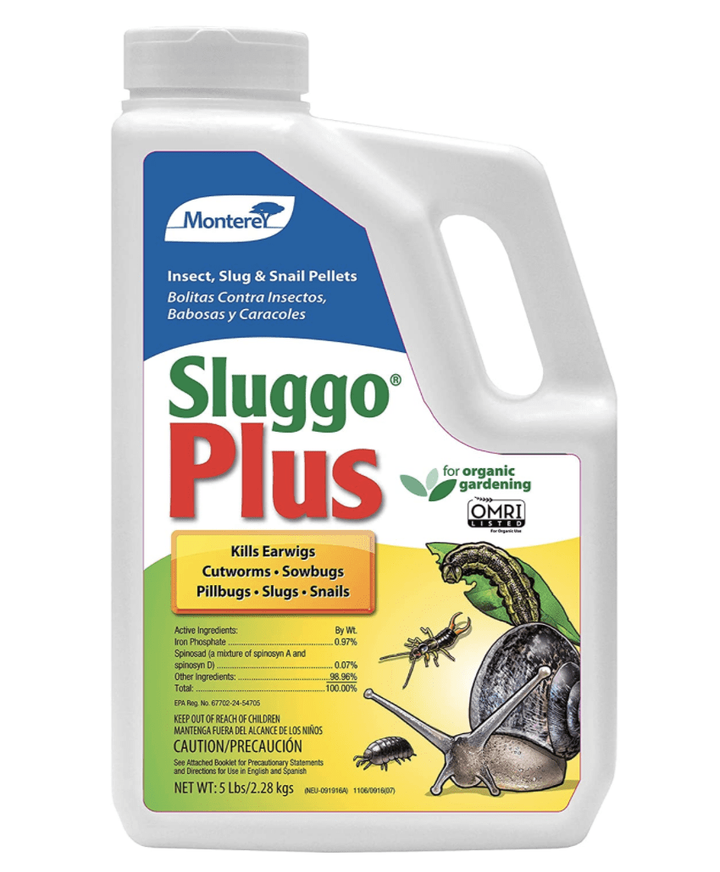
We hope these solutions show you how to get rid of pill bugs, and you get back to gardening with success and joy. If you have any questions about pill bugs or organic pest control you can contact us at info@growingspaces.com or check out our other blogs on organic pest control.
Share This
The staff at Growing Spaces enjoys sharing with you. We hope you enjoyed this article!
Subscribe to Our Newsletter
Join our community to stay up to date

Featured Categories
Downloads

Please Subscribe to Our Newsletter! :-)
Please Join our community to stay up to date :-)